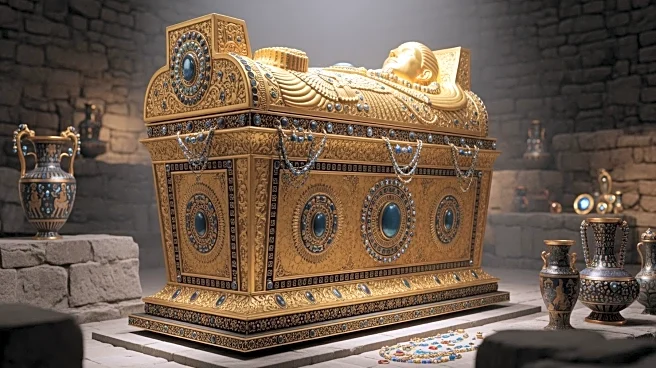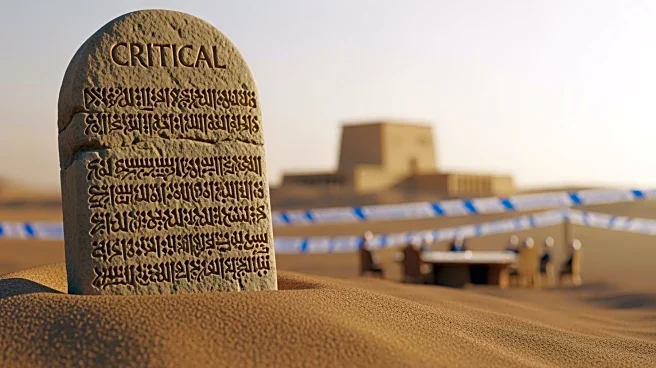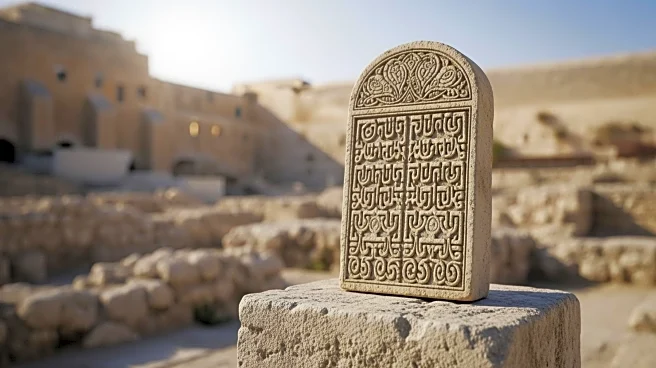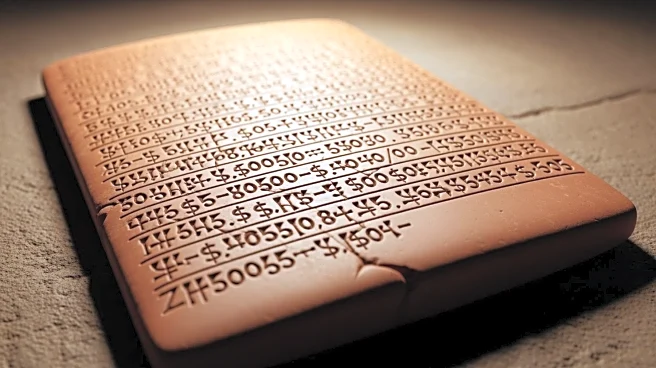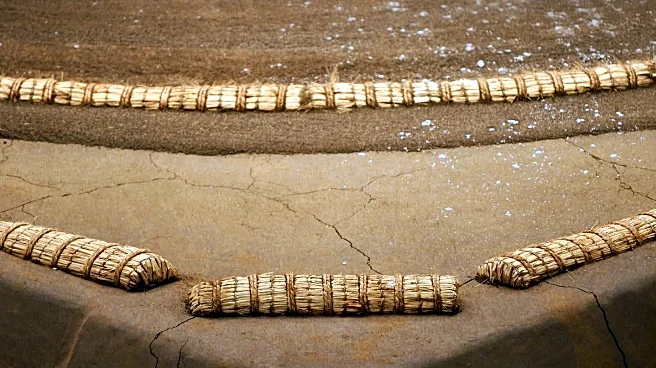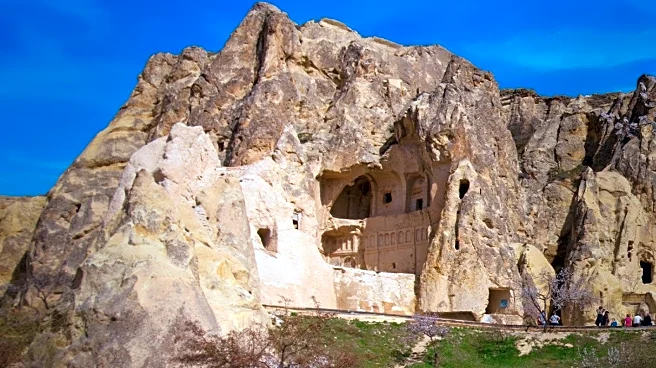What's Happening?
Archaeologists have discovered a pair of unusual graves in the Jezreel Valley, northern Israel, dating back to the 7th century B.C.E. The graves, one containing cremated remains and the other an inhumation,
are believed to belong to individuals of significant status during the Assyrian period. The cremation burial contained a wealth of artifacts, including jewelry, pottery, and rare objects from various regions, suggesting the deceased may have been a high-ranking official, possibly a governor. The discovery sheds light on Assyrian rule over the Levant and their policies of land control and exploitation. The graves were found during a salvage excavation at Horvat Tevet, a site with historical significance dating back to the Middle Bronze Age.
Why It's Important?
The discovery of these graves is significant as it provides insight into the Assyrian Empire's influence and administrative practices in the Levant. The lavish nature of the burial suggests the deceased held a high position, possibly indicating the strategic importance of the region to the Assyrians. This find contributes to the understanding of Assyrian colonial administration and their economic interests in controlling and developing local resources. The presence of imported artifacts highlights the cultural exchange and trade networks within the empire, offering a glimpse into the interconnectedness of ancient civilizations.
What's Next?
Further analysis of the artifacts and human remains may provide more information about the identities and roles of the individuals buried. Archaeologists may continue to explore the site for additional graves or artifacts that could offer more context about the Assyrian presence in the region. The findings may prompt a reevaluation of the Assyrian Empire's economic strategies and their impact on local populations during their rule.
Beyond the Headlines
The burial's location and the choice of cremation raise questions about the cultural practices and political motives of the Assyrians. The graves may have served as a symbolic claim to the land, reinforcing Assyrian control over the fertile Jezreel Valley. This discovery also highlights the importance of thorough archaeological investigations, as the graves were nearly missed during the excavation process.
